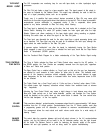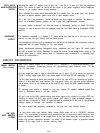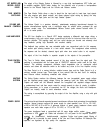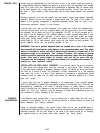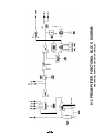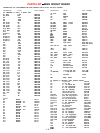
GROUND
LOOPS
CLEANING/
MAINTENANCE
Ground loops are characterized by a low level hum or buzz in the system. Loops are caused by
a voltage potential difference between two points in a ground circuit, and aggravated when multiple
paths for a given circuit exist. Noise-free audio performance is dependent upon all grounds being
at the same potential, with a single path for each ground connection. Ground loops can exist in
two forms: 1) loops created in audio interconnects, and 2) loops created between earth grounded
chassis.
Mounting components to a rack with metallic rails may introduce ground loops between associated
equipment, because the rails can introduce a second ground path. The extent of this problem will
depend on the grounding arrangements of associated equipment. Ground loops can occur in non-
rackmounted equipment, though it is less common.
If ground loops occur, and any other component in the system has a three wire grounded power
cord, the first step should be to use a ground adaptor (with the ground tab or wire of the adaptor
not connected) on the power cord plug of the preamplifier. DO NOT cut off the grounding pin on
the plug! It may be necessary to use additional adaptors on other grounded components if more
than two components are earth grounded. (In other words, only one earth ground per system
should exist.) Another potential source of multiple earth grounds is from coaxial antenna or cable
service feeds for FM or video sources, which usually are (and should be) earth grounded. The
ground adaptor(s) should cure this grounding problem as well.
WARNING: The use of ground adaptors (with the ground tab or wire of the adaptor
disconnected) will eliminate the safety feature of the grounded power cord. This safety
feature is intended to reduce the risk of electric shock should an internal fault in the
equipment result in an electrically “live” chassis. Therefore, this method of ground
isolation should be employed only when absolutely necessary, rather than as a general
practice. When using a ground adaptor for isolation, make sure that the power cord plug
is inserted into the receptacle in the same orientation as if no adaptor were present, to
maintain the same hot/neutral polarity.
SPECIAL NOTE ON VIDEO CABLE “GROUNDS”:
As mentioned above, the ground conductor
of cable service and antenna feeds should be connected to earth ground. Often, however, due
to long feed lengths, especially in apartment distribution systems, this ground will be of poor quality
and could be a source of noise. This interference is usually characterized by a high frequency
noise, rather than a hum or a buzz. If such interference is experienced, a separate earth ground
connection should be made from the cable outlet nearest the audio/video equipment to a known
good earth ground.
If ground loops exist due to potential differences in the interconnects in rack mounted systems,
then it is advisable to isolate the preamplifier chassis from the rack rails. This may be
accomplished by sandwiching a thin sheet of insulating material (i.e., plastic washers or several
layers of electrical tape, etc.) between the rack and the preamplifier, and securing the unit with non-
metallic (i.e., nylon, etc.) hardware. It may be necessary to insulate other components so that only
one component is directly connected to the rack rails.
If the faceplate should become soiled, it may be cleaned with a slightly damp, soft cloth, and, if
necessary, a mild detergent. Do not use any abrasive cleaners or solvents. Unplug the power cord
before attempting any cleaning operations.
Except as specifically detailed in the owners manual, there are no user serviceable parts or
adjustments inside the 915 Preamplifier, and all servicing should be referred to qualified,
authorized personnel. The only user access to the inside of the chassis should be for changing
the optional loading for the phono inputs (when installed). See “Phono Section”.
-17-



